Greece is home to a wide variety of tourist attractions, from the pristine beaches of the Aegean islands to the craggy hills of Crete, from the mythological massifs of Olympus in the north to the forgotten monasteries of Athos and the bustling streets of Athens in the present day. Here, we examine 15 must-see attractions in all of Greece.
Why don’t we check out some of Greece’s top attractions?
1. Corfu
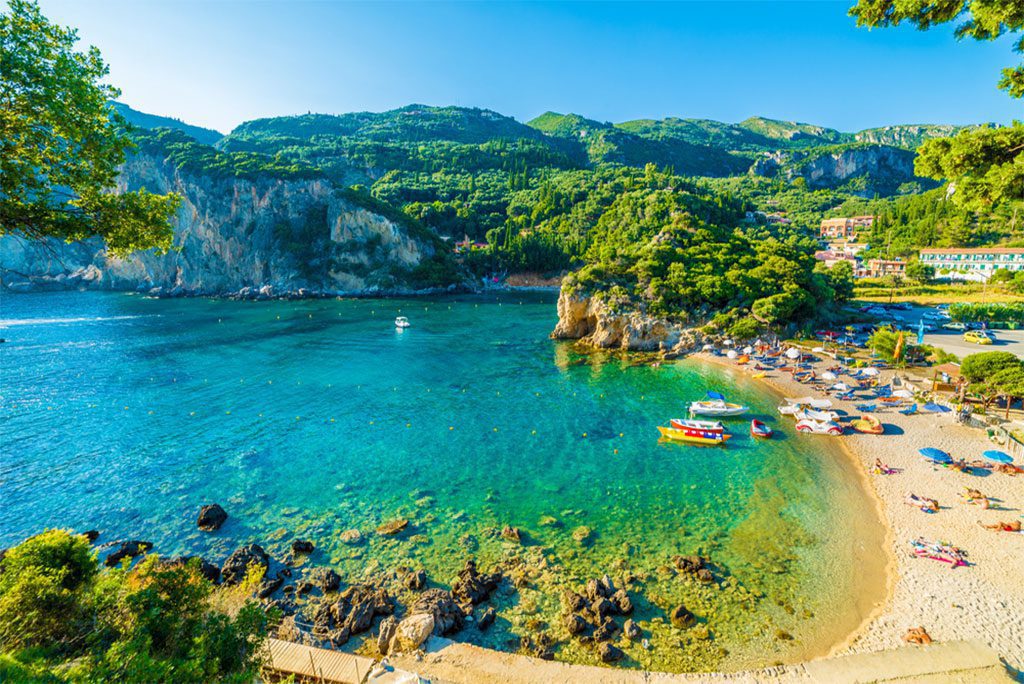
the serene beauty of a beach in Paleokastritsa on the island of Corfu in Greece. Image source: Serenity-H/Shutterstock.com
Corfu is the kind of island that belongs in a tourism brochure, what with its dog-leg shape connecting the Albanian Adriatic coast to the Greek Ionian Sea. Pelekas and Chalikounas, two of the island’s many pristine alabaster beaches, exude a quiet, unspoiled beauty, while the historic districts of Corfu’s Old Town and Old Perithia explode with Venetian antiquities, anti-pirate fortresses, and sun-drenched esplanades. Forests of spiky cypresses and flailing Spanish fir trees rise with the mountains in Corfu’s interior, while picturesque settlements like Lakones provide a splash of whitewashed colour to the otherwise verdant landscape.
2. Nafplion
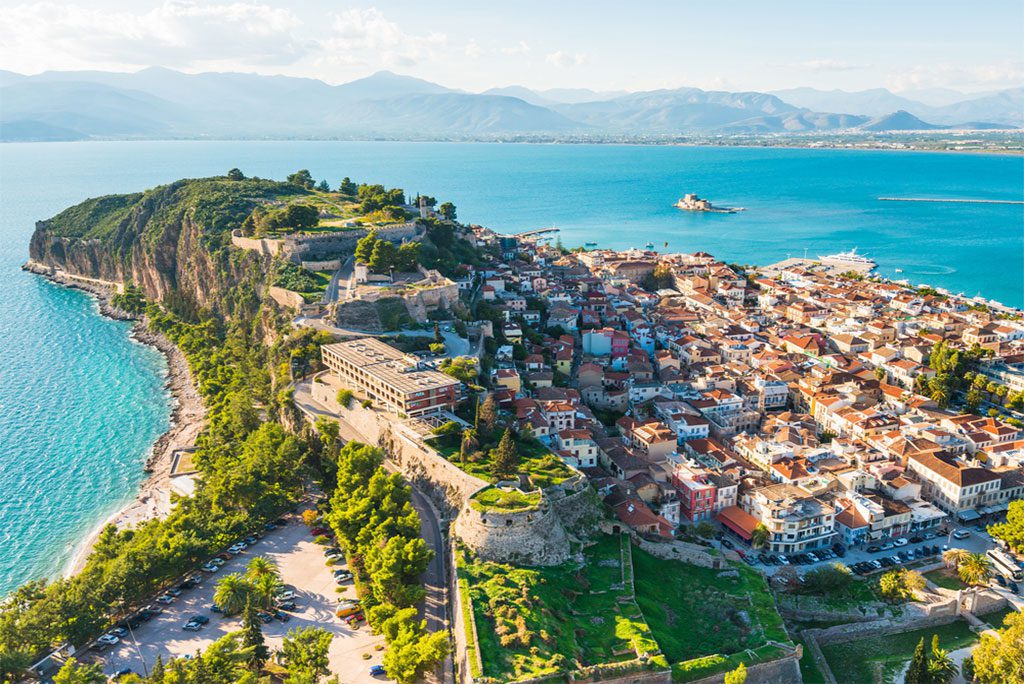
the charming city of Nafplio in Greece. Image source: Olga Kot Photo/Shutterstock.com
Nafplion has been shaped by Greeks, Ottomans, Byzantines, and others over the centuries; it was the capital of the Greek State in the 19th century and has long been a favourite of Athens’ wealthy elite (just check out the seaside mansions that line the shore and the bobbing millionaire yachts in the harbour!). To which we respond with the towering and fortified bulwarks of the Palamidi Citadel, perched on the slopes above the town and built by the Venetians in the 17th century. The port’s lively esplanade is a terrific spot to get some authentic, down-to-earth Mediterranean fare, and the gorgeous, marble-clad Constitution Square commemorates the national resurgence that took place there.
3. Corinth

the ancient Temple of Apollo at the archaeological site of Corinth in Greece. Image source: pixels outloud/Shutterstock.com
Corinth flourished in antiquity because of its prime location at the crossroads of ancient Attica and the Peloponnese, between the rugged peaks of the Oneia Mountains and the dazzling waters of the Corinthian Gulf. During the turbulent Peloponnesian War in the early 5th century BC, its fleet and strategic location on the Isthmus of Corinth made it an essential contact point between the two big powers of Sparta and Athens. Those massive fortifications, the soaring ancient acropolis (possibly even more striking than its counterpart in Athens), and the wealth of art and culture displayed in the Archaeological Museum of Ancient Corinth today all show that Corinth sided with the winner and was certainly an ally to be wooed.
4. The Halkidiki Peninsula
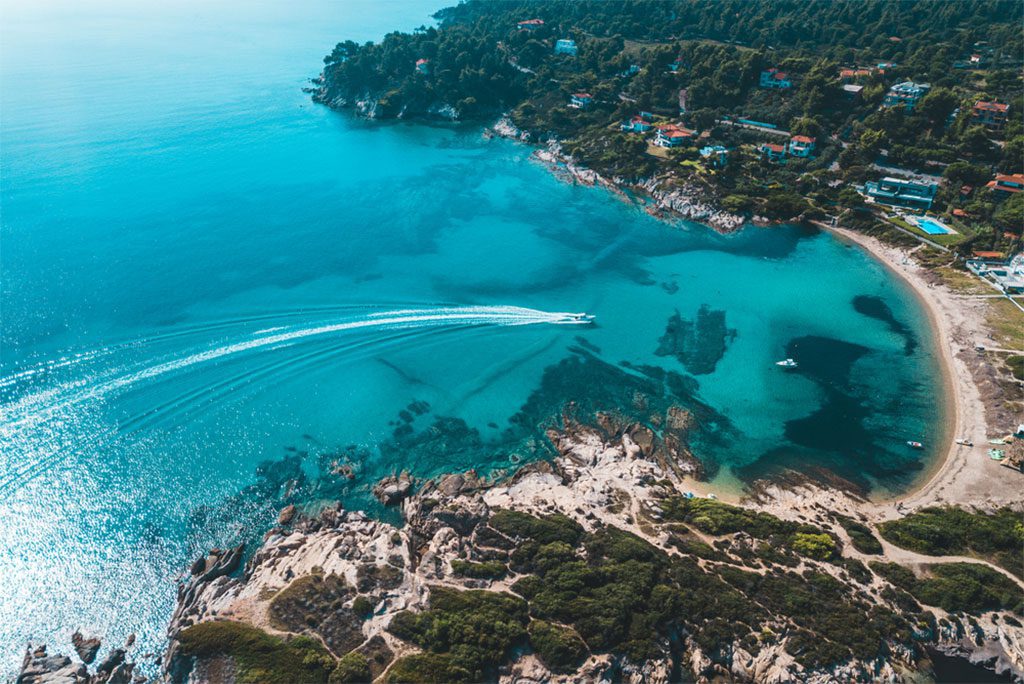
the beautiful coastline of Halkidiki in Greece. Image source: Marjan Apostolovic/Shutterstock.com
The Halkidiki Peninsula is a peninsula that protrudes into the Aegean Sea like three bent fingers to the south of the bustling city of Thessaloniki, and it is home to some of the greatest beaches and resorts in all of northern Greece. The golden beaches of Kalamitsi, near the tip of the Sithonia promontory, and the accompanying campsites attract a more sedate group of ecotourists, while Kassandra shows you how to party with its beachfront cocktail bars and a scattering of swanky hotel chains overlooking the Mediterranean. Next, there’s the enigmatic easternmost peninsula of Athos. Some of Greece’s most conservative monastic groups call these hilltop cloisters home, where they stubbornly adhere to the traditions of the Greek Orthodox Church.
5. Mycenae
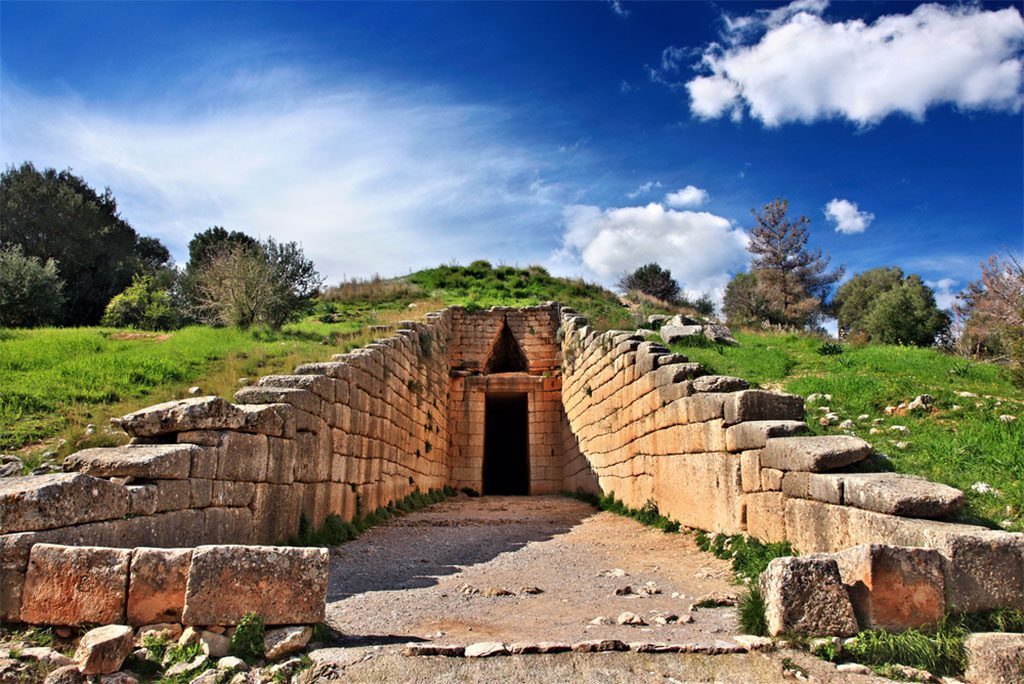
the entrance of the Tholos tomb of Atreus in ancient Mycenae, Argolida region of Peloponnese in Greece. Image source: Heracles Kritikos/Shutterstock.com
Mycenae, stretched over the limestone hills and olive grove–lined slopes of the Peloponnesian Argolid, is the supposed birthplace of a mythological cyclops and the ancestral home of the powerful King Agamemnon (the same of the Trojan Wars). There is little doubt that this area of Greece, which is off the usual path, has some of the most impressive and fascinating ancient sites in the world. Unlike the impressive Athenian Acropolis or the temples of Delphi, it dates back considerably further in history. Many of the impressive monolith defences, spectacular burial sites, and huge kingly tombs in this ruin belong to the 14th century BC, when the Atreid dynasty was at its peak.
6. Delphi
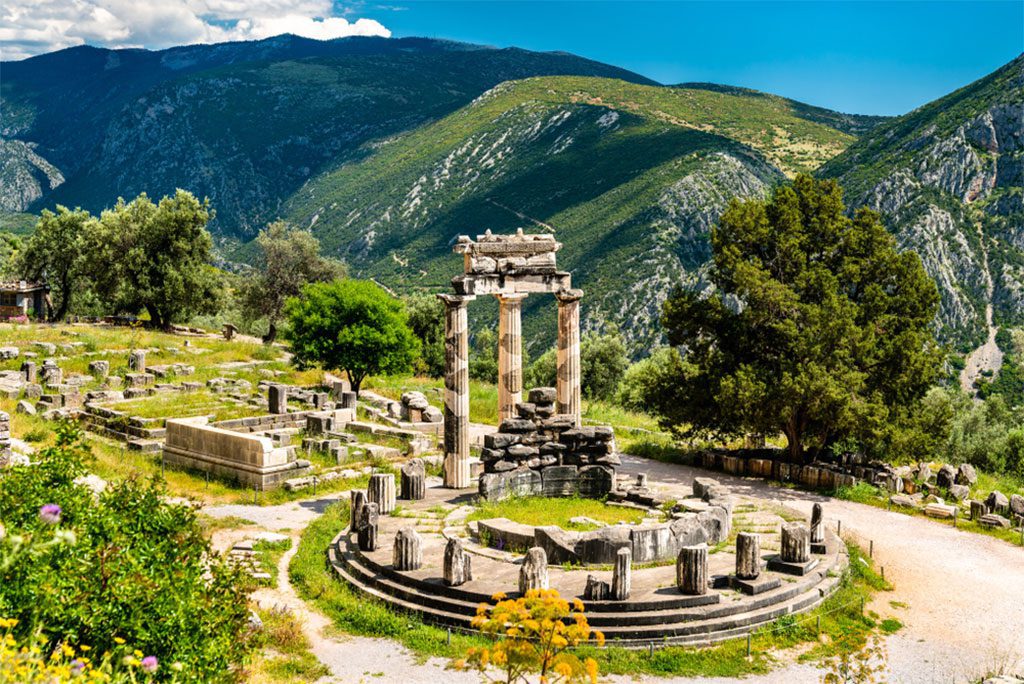
Temple of Athena Pronaia, an UNESCO world heritage site in Greece. Image source: Leonid Andronov/Shutterstock.com
Delphi, perched on Mount Parnassus at the mouth of the Corinthian Gulf, is home to a wealth of historic monuments and sites. This stunning jumble of crumbling ruins and towering peristyles served as the spiritual epicentre of the ancient world for ages, attracting rulers of all stripes in search of the wisdom of the oracle and the blessings of the Pythian priestesses. The hexastyle Doric columns of the decaying Temple of Apollo are the site’s crowning glory. Within their shadows are the ancient apartments of the sages. Also on display are rows of historic coffers erected by the ancient world’s city-states, as well as a gleaming theatre and a mountainside stadium.
7. Rhodes
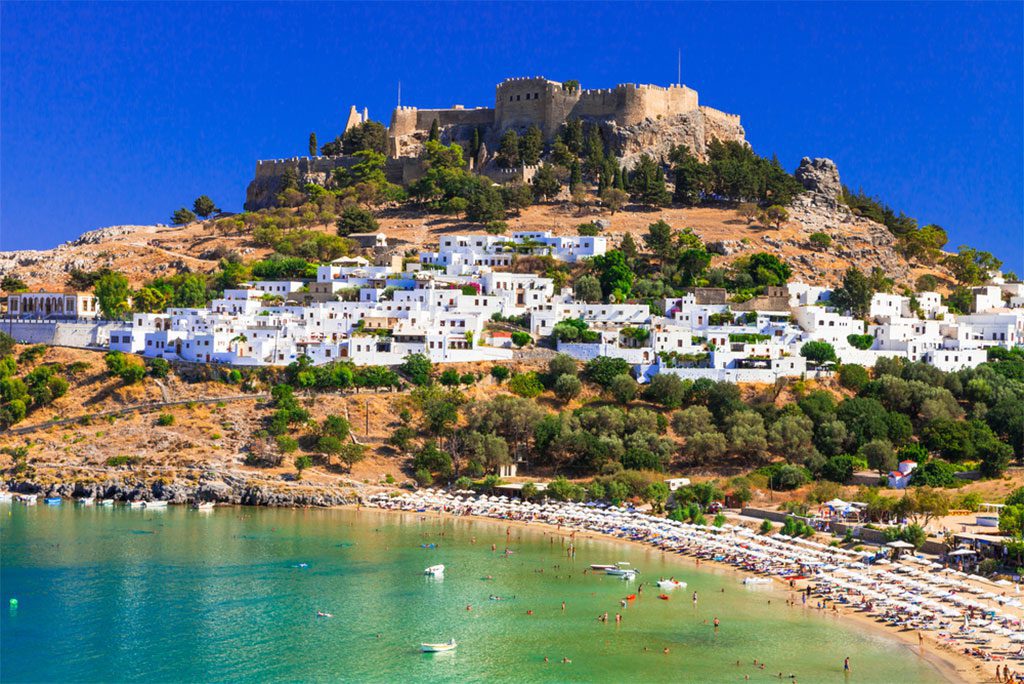
Rhodes Island, Greece – historic landmarks and beautiful beaches. Image source: leoks/Shutterstock.com
Rhodes is a teardrop-shaped Greek island in the Aegean Sea that attracts throngs of visitors every year with its allure. The island is known for its dazzling beaches, quiet pebble coves, ultra-luxurious five-star resorts, intriguing villages, and alluring mountain interiors. Visit Rhodes City, an ancient village, first. It clings to the northeastern shore and formerly housed the Colossus of Rhodes (one of the marvels of the ancient world), but today displays the gorgeous mediaeval Grand Master’s Palace (a UNESCO site to boot). The interior towns and castles exude a more laid-back, Dodecanese appeal, while the Valley of the Butterflies explodes with colour, the beaches near Ixia sparkle in the sun, and Faliraki’s 18-30 clubs never sleep.
8. Zakynthos
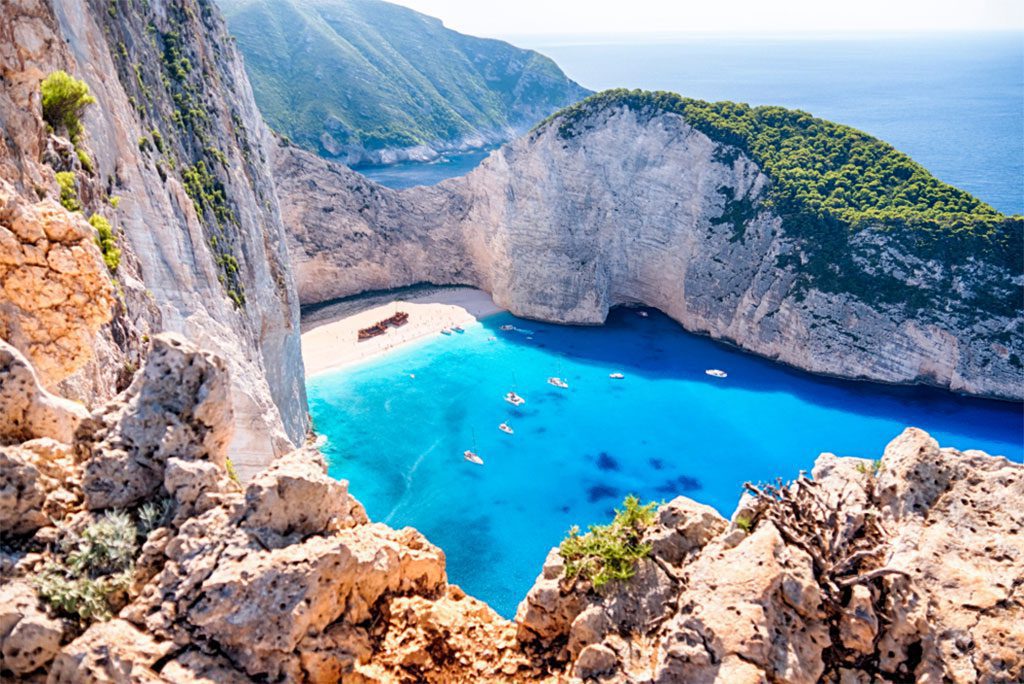
Navagio Beach with the famous wrecked ship in Zante, Greece. Image source: StockBrunet/Shutterstock.com
Zakynthos, a stony Greek island, emerges from the azure Ionian Sea like a jewel from the sea. Its coastline is defined by a series of towering, white cliffs that act as a protective barrier to the west, hiding such treasures as the famous Navagio Beach (or Shipwreck Beach) and the mysterious Blue Caves on the island’s northern coast. Hikers and adventurers will find fir-dotted, cypress-spotted olive groves in the island’s central region, while in the south-west, the famed Laganas beats and booms, a hub of pounding clubs and cocktail bars that goes into overdrive during the summer high season.
9. Thessaloniki
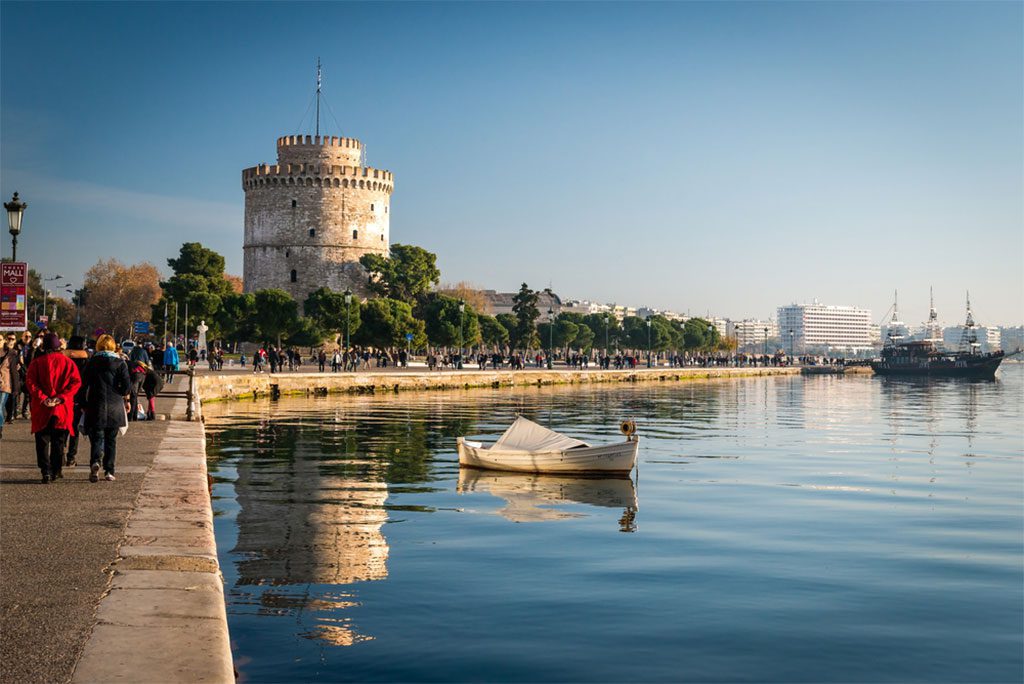
People walking on the coast in Thessaloniki, Greece. Image source: Aivita Arika/Shutterstock.com
The second biggest city in Greece, Thessaloniki, is nestled in a narrow bay off the northern coast of the Aegean Sea. The city is home to a thriving commercial port, a beautiful historical centre, and a busy university town (with more students than anywhere else in Greece). After a devastating fire in the early 20th century, the city centre was rebuilt in an eastern Byzantine style, while the remaining historic district of Ano Poli (Upper Town) has examples of classical Greek and Balkan architecture. Tourists should spend some time exploring the displays at the White Tower, visiting the Museum of Byzantine Culture, and seeing the Ataturk House before partying it up in the swanky pubs and taverns along Nikis Avenue and Krini.
10. Chania
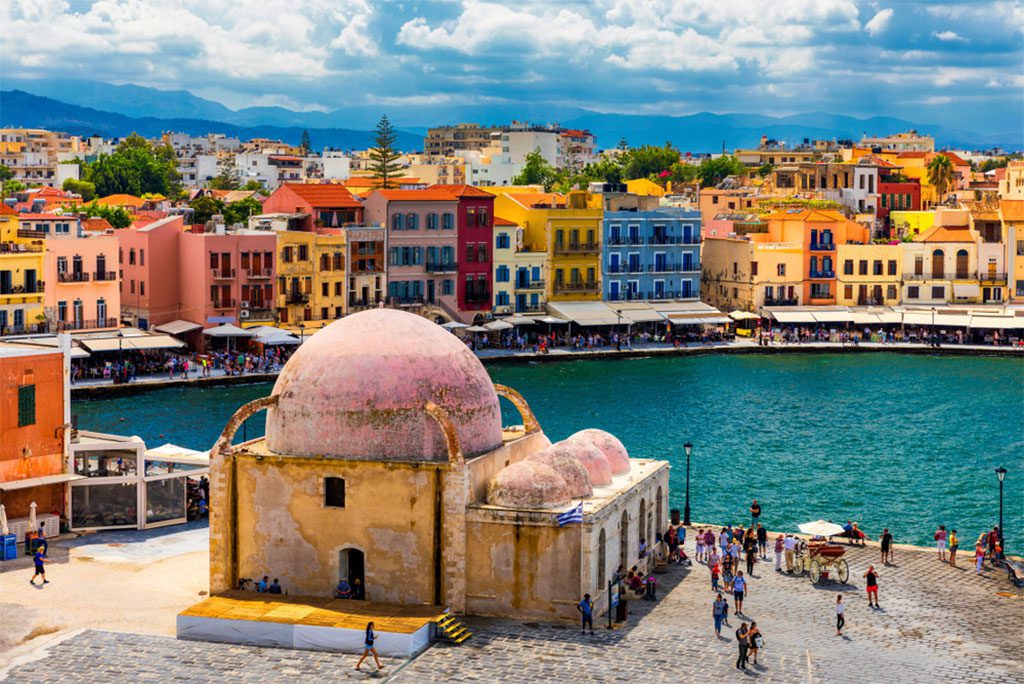
Mosque in the old Venetian harbor of Chania town on Crete island, Greece. Image source: DaLiu/Shutterstock.com
Under its terracotta rooftops and the stone-clad tower of its Venetian Lighthouse on the edge of the Med, Chania hides narrow passageways filled with Cretan tavernas and salt-smelling seafood eateries. It’s undeniably one of the island’s loveliest harborside communities, with its blend of Turkic and Italianate styles of building. Crete has its own highland greens, dakos pizza breads, uber-fresh olive oils, and, of course, strong homebrewed raki, as well as Ottoman antiquities and collapsing forts to view and experience.
11. Knossos
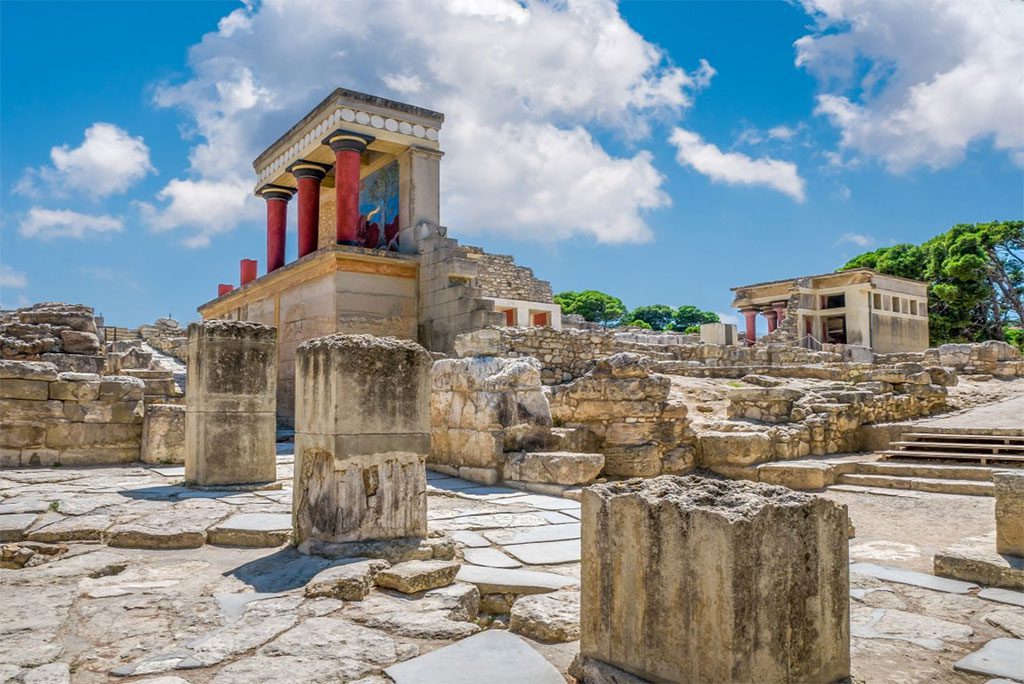
Knossos Palace ruins at Crete island, Greece. Image source: iuliia_n/Shutterstock.com
The massive Palace of Knossos, the greatest Bronze Age monument in all of Greece, can be found only a short journey south of the Cretan city, Heraklion. The site, which was excavated and partially rebuilt in the early 20th century, has many of the ancient Minoans’ mysteries (who dominated this section of the Aegean for almost two millennia). The great palace building and the recognisable red-painted columns that support it are covered in beautiful mosaics and the famed charging bull frescos. The dazzling royal chamber of Bronze Age rulers, where the mythical battle between the Minotaur and the labyrinth would have taken place, is also on display, as are the remnants of Minoan pottery.
12. Athens
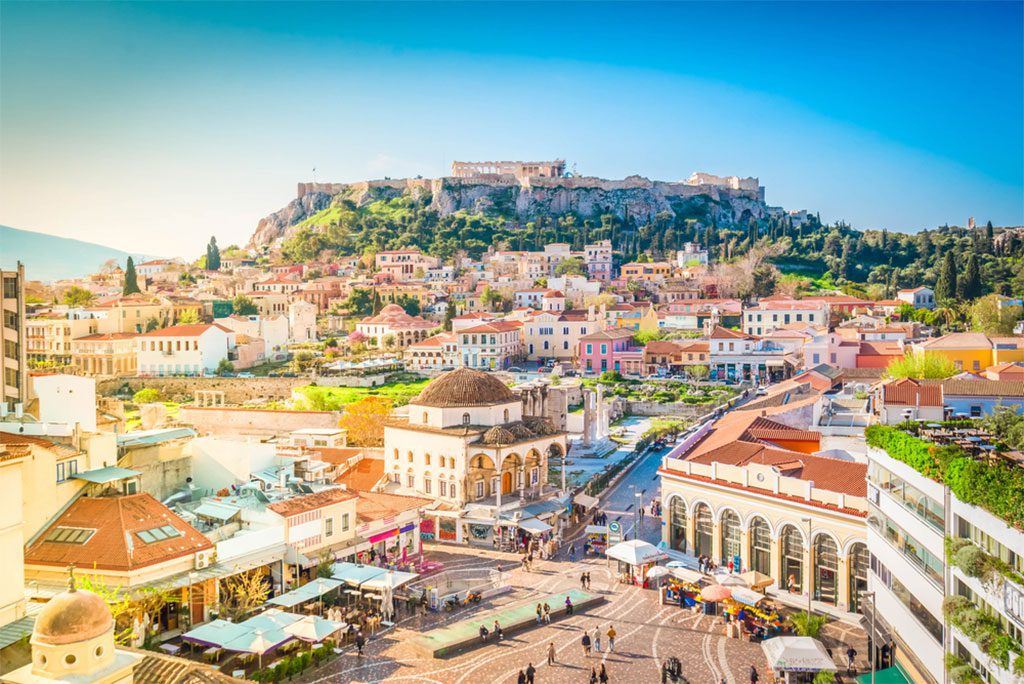
Skyline of Athens with Monastiraki square and Acropolis Hill, Athens, Greece. Image source: Neirfy/Shutterstock.com
Athens has a richer history than almost any other city in the world. Socrates and Plato, Euripides and Pericles would have stood in this area, crowned by the huge Parthenon and the spreading remnants of the Agora, to debate and discuss the concerns of the day. It was the womb from which Oedipus Rex, The Antigone, and Phoenician Women sprang, as well as the site where democracy was born in the late sixth century according to Cleisthenes. The city is still the biggest in Greece and a centre of politics despite its turbulent history. It is also home to several beautiful churches and the parliament building. Don’t forget to check out the Plaka neighbourhood on your way to the Acropolis, where traditional taverns may be found nestled among the ruins.
13. Olympia
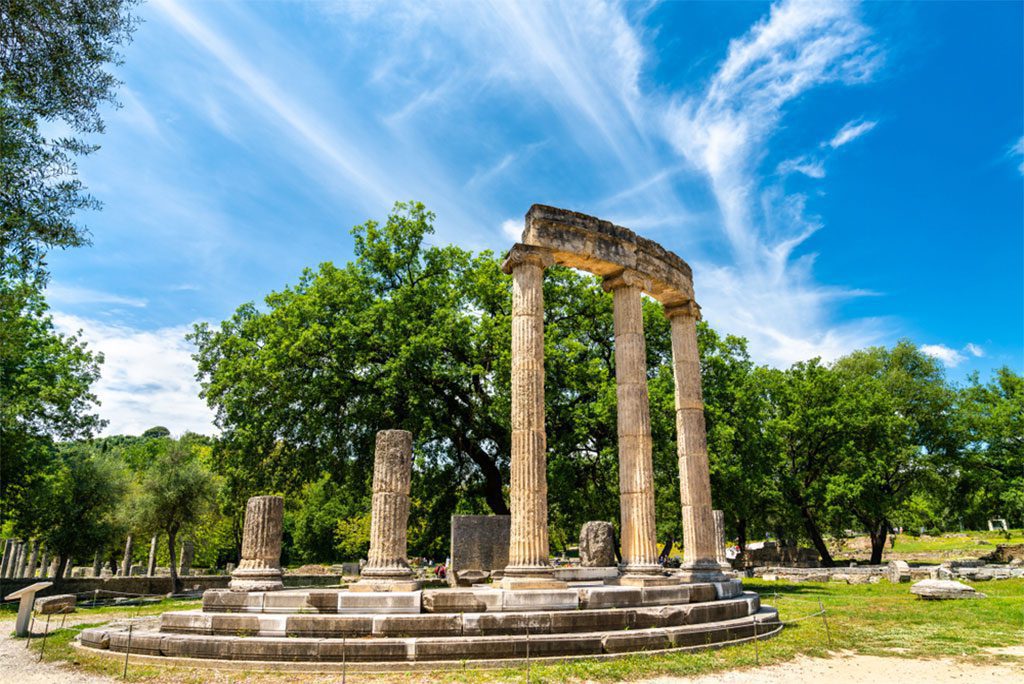
The Philippeion at the Archaeological Site of Olympia, UNESCO world heritage in Greece. Image source: Leonid Andronov/Shutterstock.com
One of Greece’s most iconic landmarks is the site where the Olympic Games were first held. The site features the excavated Olympic stadium and training grounds, where ancient athletes would have competed for the prestige of their poleis (city states), and the site is hailed as the heart of the so-called Valley of Gods for its mind-boggling wealth of honorific temples and towering monuments to the likes of Zeus and Hera (many of which are preserved in the on-site archaeology museum). Hikers and bikers will find a plethora of paths in the nearby rough interior hills of the Peloponnese, in addition to the natural beauty of the Alfios River valley.
14. Epidaurus
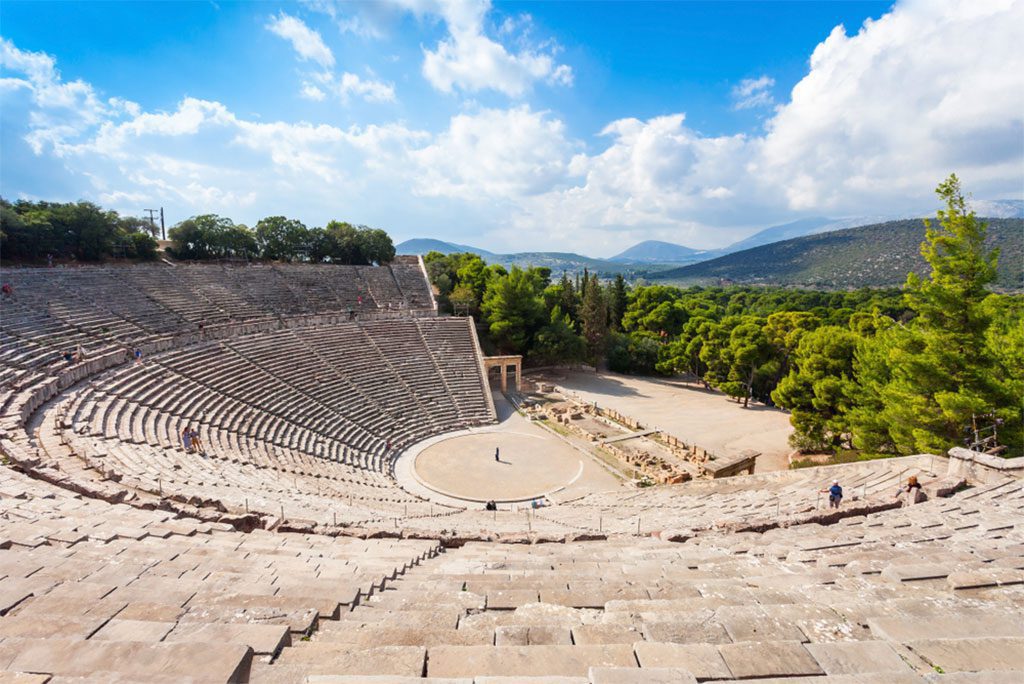
The Epidaurus Ancient Theatre is a theatre in the Greek old city of Epidaurus. Image source: saiko3p/Shutterstock.com
The city of Epidaurus, formerly considered by many to be the finest healing location in ancient times, is located on the southeastern coast of the Argolid Peninsula, not far from the Corinthian peninsula. The former Sanctuary of Asklepios, which was bustling with doctors and patients from the Classical through the Roman ages, is the most well-known relic here. However, many of today’s tourists to Epidaurus come specifically to see the massive amphitheatre in the site’s centre, a masterwork from the 4th century BC with some of the world’s best acoustics for an outdoor stadium.
15. Meteora
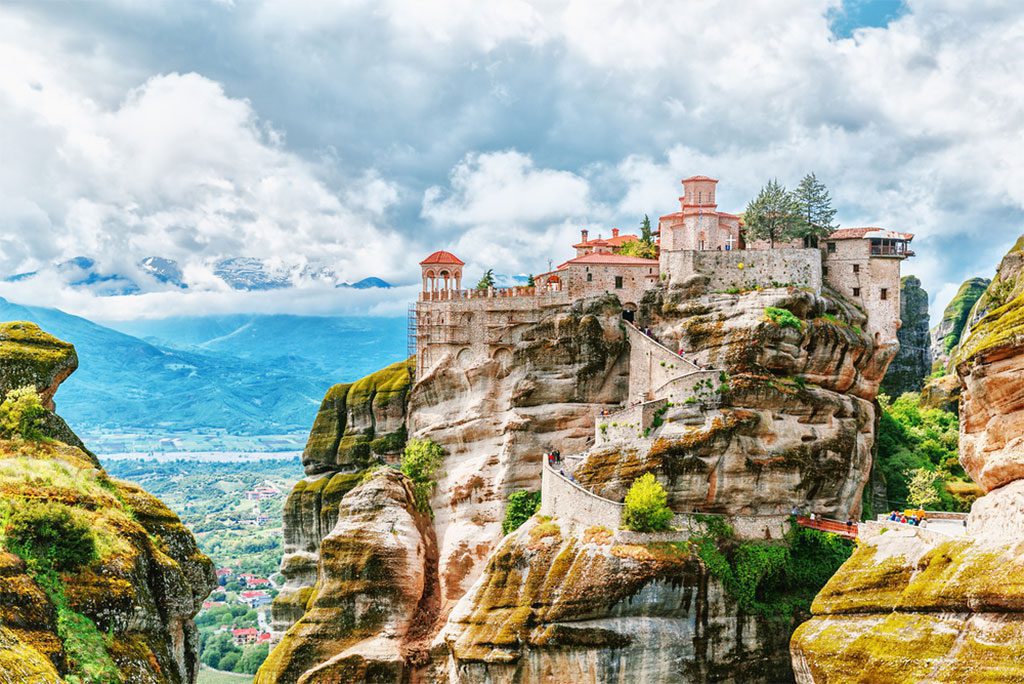
Monastery Meteora Greece. Image source: Feel good studio/Shutterstock.com
The great cliffs and hoodoos at Meteora, which seem like they were pulled directly out of James Cameron’s Avatar, are almost certain to elicit a gasp. The Holy Monastery of Rousanou, Varlaam, and Great Meteoron, three of Greece’s most revered Orthodox monasteries, may be seen hanging precariously on the sandstone pillars in awe-inspiring displays of Byzantine and post-Byzantine art and architecture. These magnificent buildings, which were constructed during the 14th and 16th centuries and are now protected by UNESCO, stand out against the dramatic backdrop of the region’s towering mountains.


